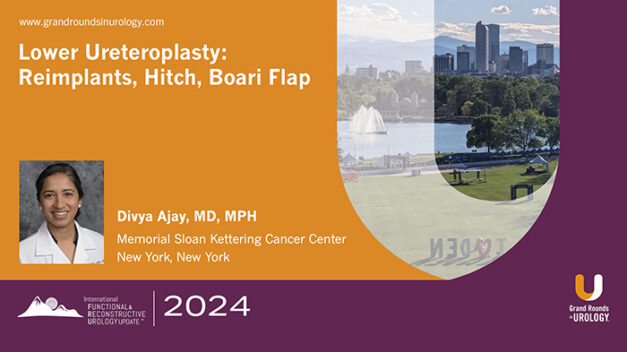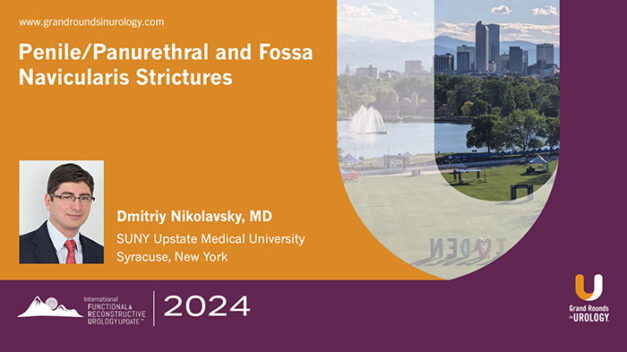Retroperitoneal Fibrosis: Turning Friendly Territory Hostile
Joshua E. Sterling, MD, MSc, addresses the complexities and surgical challenges of managing retroperitoneal fibrosis.
In this 9-minute presentation, Dr. Sterling emphasizes the shift in treatment strategy over the years. While early management relied heavily on surgical intervention, the current approach prioritizes high-dose steroids as the cornerstone of treatment. For patients unresponsive to steroids, immunosuppressive agents or monoclonal antibodies are considered. Surgery is now reserved for refractory cases or when systemic therapy is insufficient.
Sterling includes imaging and procedure videos that illustrate the challenges of retroperitoneal fibrosis. He stresses that surgeons must rely on sharp dissection rather than electrocautery to navigate the fibrosis safely. Techniques like intraluminal ICG or cystoscopy are recommended to locate the ureter amidst dense fibrotic tissue.
Dr. Sterling concludes with practical advice on teamwork, backup planning, and the importance of coordinating surgical strategies to maintain team confidence and patient safety.





